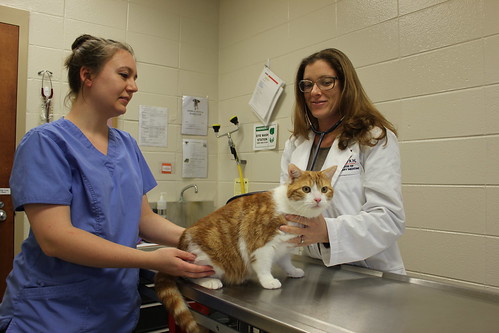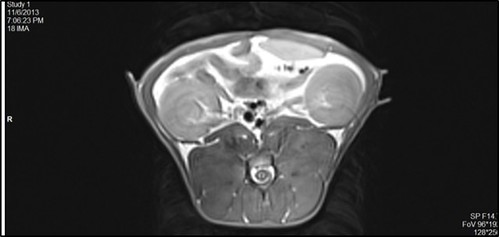Feline diabetes researcher to present findings as part of Boshell Research Day
Article body
Dr. Emily Graff sees cats not only as loving companions, but also as a gateway to better understanding diabetes. A post-doctoral fellow at the Auburn University College of Veterinary Medicine, Graff heads a research project to understand obesity and diabetes in cats in the hope that it will provide a better understanding and possible new treatments for human diabetes.
Graff's research falls under the umbrella of the Boshell Diabetes and Metabolic Diseases Research Program based in the College of Veterinary Medicine, which collaboratively works with more than 40 faculty members at Auburn. Boshell is a research initiative that seeks to better understand and treat diabetes and metabolic diseases by uniting the efforts of researchers across the university.
Boshell researchers and scientists gather each year to share information and present research findings. Graff will be one of several researchers presenting at the 9th Annual Boshell Research Day on Feb. 26, at The Hotel at Auburn University and Dixon Conference Center.
"Cats work very well for a translational model for humans, because just as in humans, cats develop diabetes naturally," Graff said, making cats a near perfect model to study.
A key difference, however, in human and feline diabetes is that cats tend not to develop cardiovascular issues. About 70 percent of the fatalities in people with Type 2 Diabetes result from cardiovascular problems, including hypertension and heart attacks that develop from insulin resistance and obesity.
Doctors and scientists understand a great deal about what occurs in obesity and diabetes, but the question of why remains a challenge. Graff and her research team hope that by understanding why cats tend not to develop cardiovascular issues from diabetes, they will be able to better understand and treat diabetes in humans.
Collaborating with several researchers within the Department of Pathobiology and the Scott-Ritchey Research Center at the college, as well as scientists in the Harrison School of Pharmacy, Graff and her team have studied a group of 12 male cats, all neutered and within a month of age, for 18 months to see how their bodies change as they gain weight and develop diabetes.
Graff said that the project is a collaborative endeavor, not only because of the diverse fields that her research partners come from, but because it's based at a veterinary college.
"Being in a veterinary school is very important, because animals are here consistently, and we can reference pre-existing information as we conduct our own research," she said. "If we weren't here, I don't think this research would be possible."
With the first phase of the project complete, Graff and her team have verified that cats serve well as a model for humans, and have uncovered many questions about diabetes in cats. Her next step is to understand why.
"I look at this project as a gateway: by finding one piece of data, we answer one question, which leads to another," she said. "That's the point of research. We're always asking questions and we're always looking for the answer."
For more information about Boshell Research Day, go to www.auburndiabetes.com.
Related Media
Media interested in this story can contact Communications Director Preston Sparks at (334) 844-9999 or preston.sparks@auburn.edu.
Auburn University is a nationally ranked land grant institution recognized for its commitment to world-class scholarship, interdisciplinary research with an elite, top-tier Carnegie R1 classification, life-changing outreach with Carnegie’s Community Engagement designation and an undergraduate education experience second to none. Auburn is home to more than 30,000 students, and its faculty and research partners collaborate to develop and deliver meaningful scholarship, science and technology-based advancements that meet pressing regional, national and global needs. Auburn’s commitment to active student engagement, professional success and public/private partnership drives a growing reputation for outreach and extension that delivers broad economic, health and societal impact.







